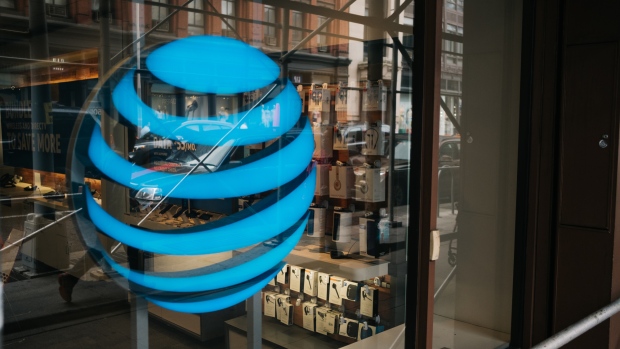Apr 24, 2019
AT&T slumps after bleeding subscribers as it focuses on debt
, Bloomberg News

AT&T Inc. dropped as much as 3.7 per cent after losing more U.S. wireless and TV subscribers than anticipated last quarter. The phone giant retreated from promotions while working on reducing debt stemming from its Time Warner takeover.
The loss in net wireless subscribers amounted to 204,000 in the first quarter, mainly due to a drop off in tablets, and AT&T also lost 627,000 TV customers. Analysts predicted declines of 50,000 and 389,000, respectively.
For now AT&T is sacrificing subscribers to manage the balance sheet, a strategy that has its risks because monthly phone and TV customers generate cash flow that supports dividends and buybacks in the long term. The Dallas-based company, owner of DirecTV, spent US$85 billion on Time Warner last year to get must-see content as more customers ditch conventional pay TV for streaming alternatives like Netflix Inc. But before AT&T can invest in its assets, it’s focused on debt that ballooned to US$180 billion when the deal closed.
The TV business has been bleeding customers: It has now lost almost 1.3 million subscribers over just two quarters out of a total of 23.9 million in the U.S. Executives said on a conference call that it will likely get worse. AT&T attracted DirecTV customers with heavy promotions two years ago, and now has 1.6 million subscribers who are paying a lower price. Those agreements will expire this year and cause more cancellations, the company said.
The shares were trading down 3.3 per cent to US$31.03 as of 10:27 a.m. in New York. Before Wednesday, they had dropped 8 per cent in the past year, while the S&P 500 Index gained 9.9 per cent.
The wireless business has been faring slightly better. While the company lost tablet subscribers, AT&T added 80,000 regular monthly phone subscribers, the first gain for a first quarter in five years.
Still, AT&T is facing industrywide challenges, as wireless customers hang on to their phones longer than ever. Only 3.5 per cent of AT&T customers upgraded their phones last quarter, the lowest replacement rate ever. Verizon hit a similar low last quarter.
On the balance sheet front, AT&T said Wednesday that it reduced net debt by US$2.3 billion during the quarter to US$169 billion. It is selling assets like a Hulu investment and office properties including 30 Hudson Yards in New York to help reach its goal of US$150 billion at the end of the year.







